Sketch Fridays #34 – Backfire
Like most passionate teenaged comic book fans who aspired to be artists for the medium, in the mid-1990s Josh Tobey and I got to work creating our own superhero group. We were both avid X-Men fans and, by the time of this team’s creation, WildCATs fans (as well as any and every team book published by the Image Comics founders, but we both shared a particular allegiance to Jim Lee’s team and its continuity), and it’s pretty clear looking at the old drawings how much influence they had on our “original” creations.
This team (alternatively known as “Cybers,” “Cybernet,” and “Cybertek”) was a four-person outfit, which was most amenable to a shared creation because, that way, Josh and I could split the work right down the middle. One of the characters I created was Backfire, the assigned leader of the group and, if I am to be honest, the team’s token female as was the wont in the ’90s.
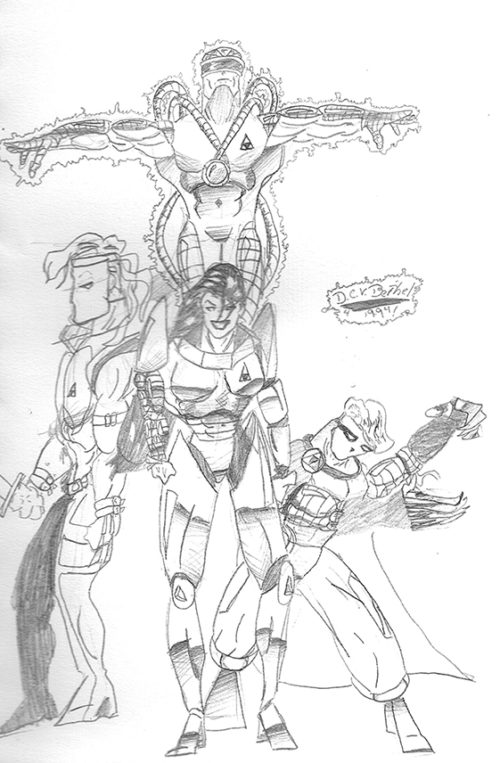
I am so sorry you have to see this. From 1994.
Again, I won’t lie and say that her gender wasn’t the guiding factor in her creation, but her general aesthetics were guided by a popular strategy at the time: take a traditional trope and invert it somehow. None of our team carried big guns like a lot of heroes of the time (but, oh boy, did they have pouches), so I gave the guns to the token female who, traditionally, was the one character who didn’t carry guns in a group.
Like many female superheroes (especially in the Marvel/Image realm), Backfire’s basic power set was psychic in nature, but instead of being incredibly empathic (“the earth cries out to me!”) or being a living proximity alarm (“The enemy is approaching…I can sense them!”), her psychic ability didn’t interface with minds, but with machinery. So, she developed a knack for making guns explode in people’s hands, making vehicles stop working, dropping drones out of the sky, hence the name. To add to the destruction, she was the one carrying the big guns and decked out in full armor. She was the heavy of the group, at the front of the line running into the fray.
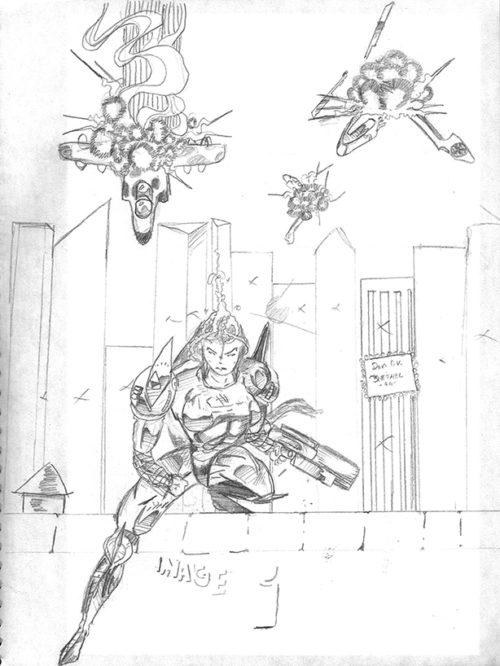
Backfirin’ in ’94. Again, apologies for whatever that anatomy is. But, hey, big guns.
There’s some of that I honestly still like. However, looking over the old sketchbooks, I may have had good ideas for her character, but because of what could only be considered a handicap at the time–that she was a woman–I had no ideas for her appearance and design. I could write some of this off as being swayed by the trends of the day–this was the height of over-inflated busts, high heels in battle, skimpy outfits, and broken backs with big hair. Thankfully, I didn’t try to sexy her up very much (aside from boob armor), but I also had no frame of reference for a design that wasn’t that. So, I covered her with shapes. And made them shiny. The rest I must attribute to general ignorance (women are hard to draw and what if I had to draw buhbuhbuhboobs!? I was a very anxious kid).
I didn’t do much redesign for Venture, and I drew him first for this series because I knew he would be the easiest place to start. My aesthetics for fantasy characters haven’t changed that much in the time since then (sadly, perhaps?). But for my superheroes…I knew they would need a lot of work for them to be considered any kind of acceptable to my modern and adult sensibilities.
But first, a little backstory.
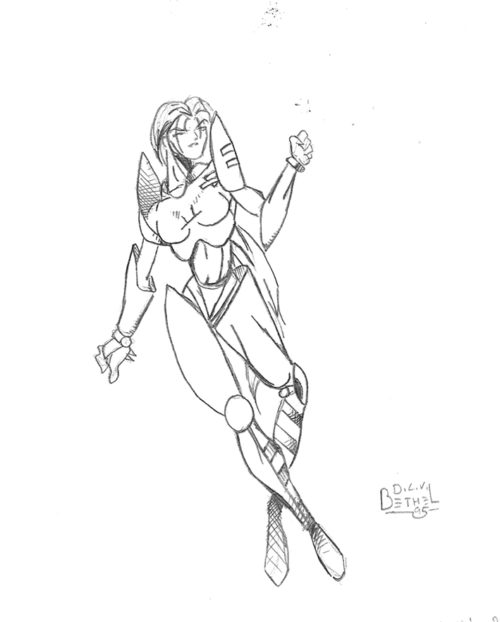
Backfire from 1995.
This team and its accompanying world has, admittedly, become quite hazy in the intervening decade and a half (almost). Building off of ideas from X-Men and Marc Silvestri’s Cyberforce, the powers in this world revolved around seemingly random manifestations of a type of techno-biological virus, or something like that. Body parts of certain people turned into the type of banded metal we’re used to seeing on Colossus in the X-Men. Where it solidified is where your power would be centered. Interestingly, I think Backfire was the only member of the team who didn’t have a visible manifestation of the virus, so that was where I started with the redesign.
In terms of superheroes, I’m interested in the idea of looking at powers as both helpful as well as being debilitating, as they would be in real life. Everything should have a positive and a negative effect on its user. One of the things that bothers me about the mutant powers in X-Men is that this idea is not explored enough. It is for certain characters, but it makes sense in terms of the mutant narrative and realism that every power is both a boon and a detriment. With the virus in the world Josh and I were creating literally changing your body, that narrative is intrinsically built in.
Since Backfire’s powers are psychically-based, it made sense that it would be her head that showed the affliction. To emphasize the tragedy of it, I felt like it would be best to cover most of her face, with the lack of eyes being the focus. I figured that even though she couldn’t see with the eyes she was born with anymore, I rationalized it with her power. With the prevalence of technology, especially cameras, everywhere, she could not only easily use those as a replacement and triangulate her position all the time (as well as having a camera on her person at all times, if she wanted), but she could also have a much wider range of vision than normal human beings, giving her an amazing tactical advantage.
I went an extra step while working this character out. Technically, all I have to do for Sketch Fridays with these old characters is draw them. However, something about where this Backfire redesign was taking me made me want to flesh out who she would be in this new form (perhaps because that was so desperately lacking in her old form).
For the character of Backfire, I was inspired by the work of Donna Haraway––a feminist scholar with a specific eye toward technology and culture––that was introduced to me by Cody Grey, a budding academic who has done some amazing investigation into not only gender identity and how it applies to the composition classroom, but also bringing in Haraway’s “cyborg” theory. Their graphic essay on this marriage of feminist theory, cyborg theory, and pedagogy, called “All Hail the New Flesh,” was of particular motivation in Backfire’s redesign. Haraway essentially argues that with the growing interdependence on technology that the lines between humanity and its animal origin (and, by extension, its animal brethren) are being erased, but more than that, technology is redefining identity, gender, and community, blurring the lines between humanity and its creation creating a new relationship not only with ourselves but with the world around us––biological and digital––or, as Cody calls it, a “betweenness” linking us and anything/anyone that is Other. A new baseline. A new humanity. A version of this schism is what motivates the X-Men and this schism between cultures, people, and identities is creatively motivating.
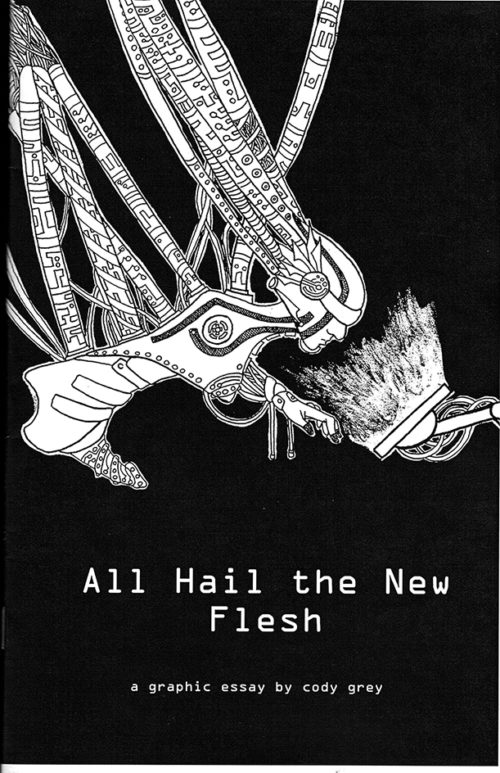
Cover from Cody Grey’s “All Hail the New Flesh.”
This concept intrigued me, especially as it applied to a team of superheroes whose bodies were intrinsically and biologically intertwined with cybernetics. For someone like Backfire whose face––one of the first determiners of our humanity to others––is half gone and who cannot see traditionally, this schism seemed to be most pertinent. So, in developing the character anew, I figured that because Backfire’s traditional means of interaction and main signifier as an individual in the world and culture around her was taken away (i.e., her face/eyes), she would voluntarily enhance and modify her body with man-made cybernetics in order to feel more connected with everything else. Specifically, the installation of cybernetic interfaces in her forearms allow for even more fine-tuned hacking and manipulation in concert with her telekinetic control of technology. Also, these physical interfaces could be used, if she allowed, by members of her team. It emphasizes touch and interaction with the important people in her life. Ultimately, by making herself more different, she tries to reconnect and, for her job as a superhero, to maximize efficacy. It’s a character quirk and, of course, it would be a need to overcome, but it’s an interesting start to me.
This Backfire still carries a gun, albeit a more humble one than the likes of which she carried back in the ’90s. Were I to carry the story out, it would be a smart gun, one that would be linked to her so she could exert maximum control over it.
Lastly, with her outfitting, I wanted her to look the role of a team leader. For this, I did turn back to comics for ideas. I thought of the leaders––the supposedly “bland” characters that people love to hate but which I often took a shining to––from my formative years like Leonardo and Cyclops. Specifically, I looked at Jim Lee’s ’90s WildCATs; I had always had a fondness for its vanilla robot leader, Spartan, and his pseudo-militaristic get up. The sharp lines and clean look really made him stand out, drawing attention to him––both positive and negative––which, I would argue, is what a leader should do. That’s how they make up for being bland, by being completely selfless in the face of danger.
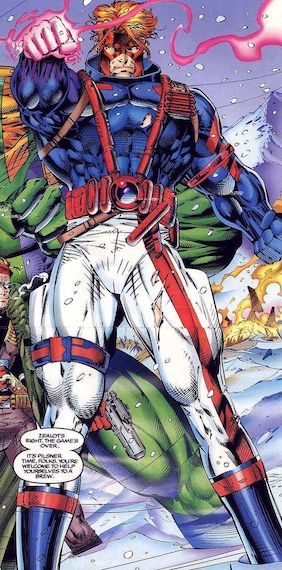
1990’s Spartan from Jim Lee’s WildCATs, serving as a mild costume inspiration for Backfire’s new look.
It’s ironic that the one character without a face became the face of the team in this redesign, but the irony works to the benefit of the character and the team. I did retain one bit of “armor” to homage the original design in the very fantastical boots and kneepads that made her look a bit more “comic book.”
It’s clear that even for a single drawing I did way too much thinking about this, but perhaps it speaks to whatever spark that was there to begin with, that actually made her unique amid the piles and piles of derivative cribbing I piled on top of her, actually had something worthwhile to it. The core of this character inspired me to flesh her out, to make her into a person, and one that I may keep thinking about for awhile yet.

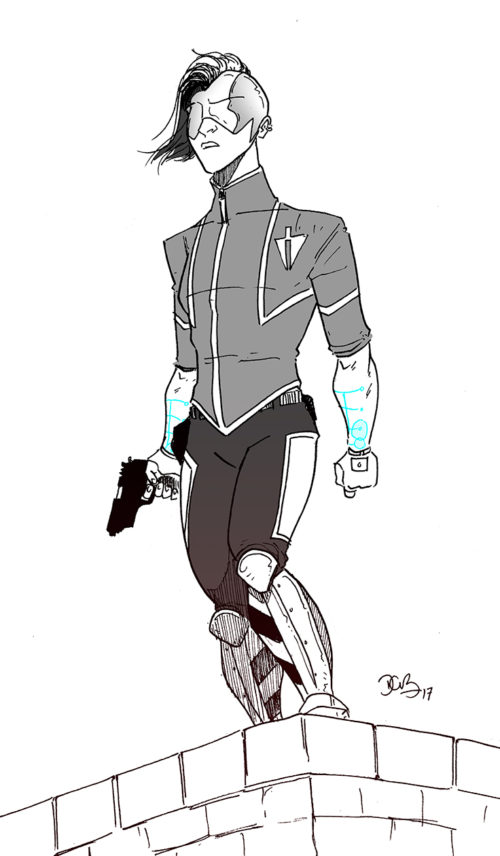
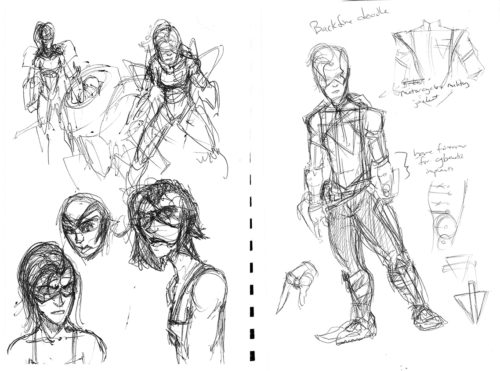
Discussion (3) ¬